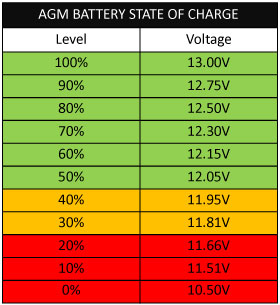SYMPTOM:
I let the service battery charge all day through the solar panel. It got up to 13.3 volts and held steady all day. I drove the van for 2 hours yesterday and observed the service battery going down to 12.7 volts without anything connected to it.
DIAGNOSIS:
Something is causing the service battery to drain when it's supposed to charge.
I'm not convinced that this diagnosis is quite correct.
If the battery were fully charged and being held in float by the solar (at say 13.3v), then all charging was shut off, the battery would slowly dissipate its "surface charge" and after a couple of hours would eventually settle down at its proper fully charged "resting voltage" of (for most lead-acid batteries) 12.7v-12.8v.
This would happen normally and naturally and doesn't require any loads to be draining the battery.
So it doesn't seem correct to say "something is draining the battery when it should be charging". I think perhaps it's a case of, "nothing is charging the battery when it should be".
I'm not familiar with the intimate details of the 250s' internal operation, so all I can do is take a guess that seems to fit the symptom. So here's one guess...
When the unit senses rising voltage on the engine battery input (engine is running), it switches the input of its internal battery charger from solar to engine battery (disconnecting the solar).
Then perhaps when it loads the engine battery input, the input voltage drops below whatever it needs to see, so it isn't charging the house battery from the engine either.
Thus no charging from either solar or engine, and without any charging or loads on the house battery, the house battery is allowed to dissipate its surface charge and drop to its resting voltage.
Another alternative - still assuming that the solar is disconnected when the engine is running - is that the battery is fully charged, so when the internal battery charger is powered from the engine, the amps flowing is low enough that the charger knows the battery is full and just doesn't bother to charge it.
Still, in that situation, I would normally expect to see it holding the battery at a float voltage. But perhaps the amp flow is low enough that when the engine was started the charger never went into bulk stage, so it doesn't run through the normal "charge profile" and never has a chance to "drop to float stage".
Dunno. Just guessing here.
I'm still thinking there's likely a voltage drop issue to the unit's engine battery input.

